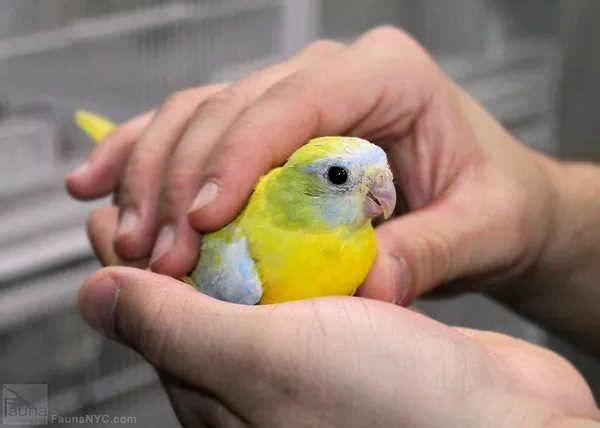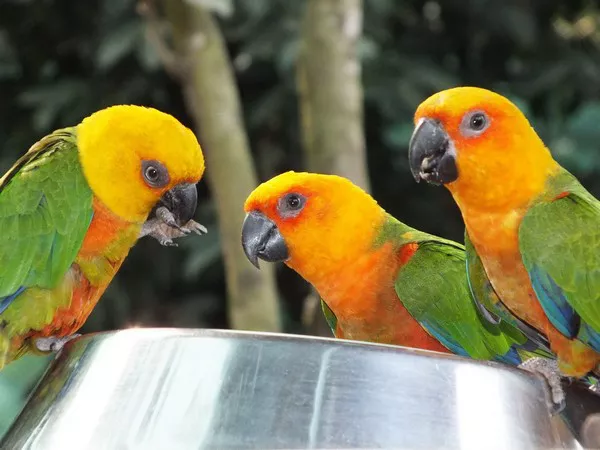The world of aviculture is a fascinating realm, offering enthusiasts the opportunity to share their lives with a diverse array of avian companions. Among these, the Indian Ringneck Parakeet (Psittacula krameri manillensis) holds a special place. With their vibrant plumage, playful personalities, and impressive mimicry skills, these parakeets have captured the hearts of bird lovers worldwide. One common query among potential pet owners is, “How much are Indian Ringneck Parakeets?” In this article, we will delve into the factors that influence the pricing of Indian Ringneck Parakeets, shedding light on the various aspects that contribute to their cost in the market.
Factors Influencing the Price of Indian Ringneck Parakeets
The price of Indian Ringneck Parakeets can vary significantly based on several key factors:
Color Mutation: One of the primary drivers of pricing in the Indian Ringneck market is the color mutation of the parakeet. While the wild-type Indian Ringneck features predominantly green plumage, various mutations have given rise to an array of striking colors, including blue, yellow, and even albino. These rare and visually appealing mutations often command higher prices due to their uniqueness and desirability among collectors and enthusiasts.
Age: The age of the Indian Ringneck also plays a role in determining its price. Younger birds, particularly hand-fed and weaned chicks, tend to be more expensive due to the effort and expertise required in their early care and socialization. Older birds, while still valuable companions, may be priced more affordably.
Hand-Feeding and Taming: Hand-raised and hand-tamed Indian Ringneck Parakeets are generally more expensive than those that have not undergone such processes. Hand-feeding involves nurturing chicks by hand to ensure their proper development and socialization. Hand-tamed parakeets are accustomed to human interaction and handling, making them more suitable as pets for individuals seeking a close bond with their avian companions.
Gender: In some cases, the gender of the Indian Ringneck can influence its price. Certain mutations or colors may be more prevalent in one gender, leading to variations in pricing. Additionally, breeders might invest more time and resources in selectively breeding specific genders for particular traits, contributing to price differences.
Breeder Reputation: Reputable breeders who prioritize the health, well-being, and socialization of their parakeets may charge higher prices for their birds. Purchasing from a reputable breeder often ensures that the parakeet has received proper care, a balanced diet, and appropriate medical attention.
Market Demand: Market demand and availability also impact the pricing of Indian Ringneck Parakeets. Highly sought-after mutations or colors may command premium prices due to limited supply and high demand from collectors and enthusiasts.
Average Price Range
The price range for Indian Ringneck Parakeets can vary widely based on the factors mentioned above. On average, a wild-type Indian Ringneck Parakeet can be priced between $200 and $400. However, for rare color mutations or hand-fed/tamed parakeets, the prices can increase significantly. Some of the more sought-after mutations, such as blue or lutino, can range from $400 to $800 or more. The prices may also vary depending on the geographic location and availability within a specific region.
Additional Considerations
When considering the cost of purchasing an Indian Ringneck Parakeet, it’s essential to factor in additional expenses:
Cage and Accessories: Parakeets require spacious cages, perches, toys, and feeding dishes. These initial setup costs should be accounted for when budgeting for your new pet.
Veterinary Care: Regular veterinary check-ups and potential medical expenses are part of responsible pet ownership. Establishing a relationship with an avian veterinarian is crucial for the well-being of your parakeet.
Diet and Supplies: A balanced diet of high-quality pellets, fresh fruits, vegetables, and clean water is essential for your parakeet’s health. Budgeting for ongoing food and supply costs is important.
Enrichment and Toys: Parakeets thrive on mental stimulation and enrichment. Investing in a variety of toys and activities helps keep your parakeet engaged and happy.
Conclusion
In conclusion, the price of Indian Ringneck Parakeets can vary significantly based on factors such as color mutation, age, hand-raising, gender, breeder reputation, and market demand. While the average price range for wild-type parakeets is between $200 and $400, rare color mutations and hand-tamed birds can command higher prices. When budgeting for an Indian Ringneck Parakeet, it’s important to consider not only the initial purchase cost but also ongoing expenses related to housing, healthcare, diet, and enrichment. By understanding the factors that influence pricing and ensuring that you are prepared to provide the necessary care, you can embark on a rewarding journey of companionship with these captivating and intelligent avian friends.
Recommended reading:
























